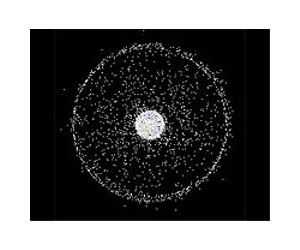by Staff WritersLongueuil, Canada (SPX) Jun 14, 2011
 In effect, the NIRST instrument will provide a new tool to monitor forest fires and measure timely the mass of fire released carbon from space. As a signatory to the UN Framework Convention on Climate Change, Canada is committed to this process. Canada's sensor technology will make it possible for scientists to advance understanding of the impacts of forest fires and other natural or human induced changes on global environment. |
Canada's Earth Observation Program reached new heights Friday with the successful launch of the 4th Argentinian Satelite de Aplicaciones Cientificas (SAC-D) aboard a Delta II rocket.
The New InfraRed Sensor Technology (NIRST) instrument, jointly developed by Canada and Argentina, will be put into low Earth orbit together with seven other instruments on this five-year international partnership mission.
The NIRST instrument will be used to retrieve temperatures of the surface of the ocean and the hot spots such as forest fires and volcanic activities.
The microbolometer sensors, which are the heart of the NIRST instrument, were designed and investigated through Research and Development activities at the Canadian Space Agency (CSA), and subsequently microfabricated and space qualified by the Quebec-based company INO.
Through an agreement between the Canadian Space Agency and Argentina's National Commission of Space Activities (CONAE), the NIRST instrument was selected for this Earth observation mission.





